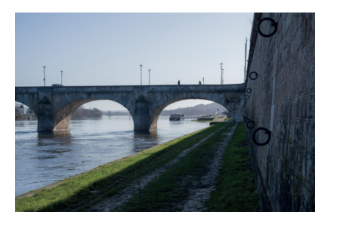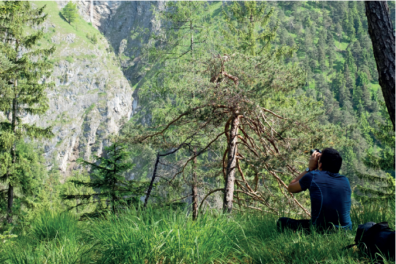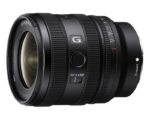 |
Key Features
- 20MP 1″-type BSI-CMOS sensor
- 24-480mm equiv. F2.8-4.5 lens
- Depth from Defocus AF
- Large electronic viewfinder
- Fully articulating LCD
- Built-in variable ND filter
- 4K video capture (DCI/UHD)
- 10-bit, 4:2:2 output over HDMI
At Photokina 2016, Panasonic released its high-end 1″-type superzoom, known as the DMC-FZ2500 (FZ2000 in some regions). It retains the same sensor as the excellent FZ1000 that came before it, while gaining a totally new lens, larger EVF, easy-to-adjust ND filter and even more customizable buttons.
While offering several new stills-related features (such as focus stacking), the FZ2500 is really all about video. It shoots both Cinema and UHD 4K, can output 4:2:2 10-bit video over its HDMI port, supports V-Log L recording (for an extra $99) and much, much more. In essence, the FZ2500 is the little brother to the DMC-GH4 ILC, which is one of the most capable video capture cameras on the market.
At this point in time, the only other fixed-lens cameras that truly competes with the FZ2500 is the Sony Cyber-shot RX10 III. The Sony has many features in common with the FZ2500, such as 4K capture, zebra pattern and a flat picture profile (S-Log2), but boasts a longer, faster lens and high speed recording at up to 960 fps.
Compared to Panasonic DMC-FZ1000 and Sony DSC-RX10 III
Speaking of specs, let’s take a look at how the FZ2500 compares to its predecessor as well as Sony’s Cyber-shot DSC-RX10 III, which we consider its closest competitor.
| Panasonic FZ2500 | Panasonic FZ1000 | Sony RX10 III | |
|---|---|---|---|
| MSRP | $1199 | $799 | $1599 |
| Sensor | 20MP 1″ BSI-CMOS | 20MP 1″ BSI-CMOS | 20MP 1″ Stacked CMOS |
| Lens focal range | 24-480mm equiv. | 25-400mm equiv. | 24-600mm equiv. |
| Lens max aperture | F2.8-4.5 | F2.8-4.0 | F2.4-4.0 |
| ND filter | Variable | No | No |
| ISO range (expanded) | 80-25600 | 80-25600 | 64-25600 |
| Top shutter speed (mech/elec) |
1/4000 sec, 1/16000 sec | 1/4000 sec, 1/16000 sec | 1/2000 sec, 1/32000 sec |
| LCD size/type | 3″ 1.04M-dot fully articulating | 3″ 921k-dot fully articulating | 3″ 1.3M-dot tilting |
| LCD touchscreen | Yes | No | No |
| EVF resolution/type | 2.36M-dot OLED | 2.36M-dot OLED | 2.36M-dot OLED |
| EVF magnification | 0.74x | 0.7x | 0.7x |
| Top burst speed (S-AF) | 12 fps | 12 fps | 14 fps |
| 4K video capture | Cine/UHD 4K @ 30p/24p | UHD 4K @ 30p/24p | UHD 4K @ 30p/24p |
| High speed video | 120 fps @ 1920 x 1080 | 120 fps @ 1920 x 1080 | 960 fps @ 800 x 270 480 fps @ 1136 x 384 240 fps @ 1824 x 1026 120 fps @ 1920 x 1080 |
| Top bitrates | 4K: 100MBps Full HD: 200Mbps |
4K: 100Mbps Full HD: 28Mbps |
4K: 100Mbps Full HD: 50Mbps |
| Flat profile | V-Log L ($99 extra) | No | S-Log2 |
| Live HDMI output | 4:2:2, 10-bit | 4:2:2, 8-bit | 4:2:2, 8-bit |
| Mic/phone jacks | Yes / Yes | Yes / No | Yes / Yes |
| Wi-Fi | Yes, without NFC | Yes, with NFC | Yes, with NFC |
| Battery life (CIPA) | 350 shots | 360 shots | 420 shots |
| Dimensions | 138 x 102 x 135 mm | 137 x 99 x 131 mm | 133 x 94 x 127 mm |
| Weight (CIPA) | 966 g | 831 g | 1095 g |
In most respects, the FZ2500 comes out on top – and that’s without including the myriad of video features that just don’t fit in the table. The RX10 III does have a longer, faster lens and the ability to shoot at very fast frame rates, but it also costs a lot more. It’s battery life is also considerably better. That said, it costs $400 more than the FZ2500, which is nothing to sneeze at.
Lens Comparison
The chart below breaks down the equivalent aperture for each camera, as you work your way through the zoom range. Our article here explains the concept of equivalence, but at a high level all you need to know is that the lower the line is on the graph below, the blurrier the backgrounds you’ll be able to get and, typically, the better the overall low-light performance.
Panasonic FZ1000Sony RX10 IIPanasonic ZS100Sony RX10 IIIPanasonic FZ2500242835501002004006004.05.68.011.016.022.0Equivalent focal length (mm)Equivalent aperture (F)
| Equivalent focal length (mm) | Panasonic FZ1000 | Sony RX10 II | Panasonic ZS100 | Sony RX10 III | Panasonic FZ2500 |
|---|---|---|---|---|---|
| 24 | 7.636 | 6.545 | 7.636 | ||
| 25 | 7.636 | 7.636 | 6.818 | 7.909 | |
| 26 | 7.909 | 7.909 | |||
| 27 | 8.182 | ||||
| 28 | 7.636 | 8.182 | |||
| 30 | 8.182 | 8.727 | 8.455 | ||
| 32 | 9 | 8.727 | |||
| 34 | 8.455 | 9.273 | |||
| 35 | 8.727 | 9 | |||
| 36 | 9.545 | ||||
| 39 | 9.273 | ||||
| 41 | 8.727 | ||||
| 43 | 9.545 | ||||
| 47 | 9 | ||||
| 49 | 9.818 | ||||
| 51 | 9.273 | ||||
| 56 | 9.545 | 10.091 | |||
| 58 | 9.545 | ||||
| 63 | 9.818 | ||||
| 69 | 10.364 | ||||
| 70 | 10.091 | 10.636 | |||
| 79 | 10.909 | ||||
| 84 | 10.364 | ||||
| 91 | 11.182 | ||||
| 100 | 10.909 | ||||
| 102 | 11.455 | ||||
| 105 | 10.636 | ||||
| 144 | 15.818 | ||||
| 151 | 11.727 | ||||
| 157 | 16.091 | ||||
| 170 | 10.909 | ||||
| 200 | 7.636 | ||||
| 208 | 12 | ||||
| 250 | 16.091 | ||||
| 262 | 12.273 | ||||
| 400 | 10.909 | ||||
| 480 | 12.273 | ||||
| 600 | 10.909 |
Focusing just on the FZ2500 vs RX10 III, you’ll see that the latter gets a headstart, as its max aperture starts at F2.4, versus F2.8. The RX10 III is always a tiny bit ahead, until it levels off at F4 for the rest of its focal length. When the FZ2500 reaches its maximum telephoto position it’s equivalent aperture is about 1/3-stop slower than the Sony. The camera with the fastest equivalent aperture in the group is the Sony RX10 II, which has a constant F2.8 aperture throughout its focal range (which ends at 200mm.)
















